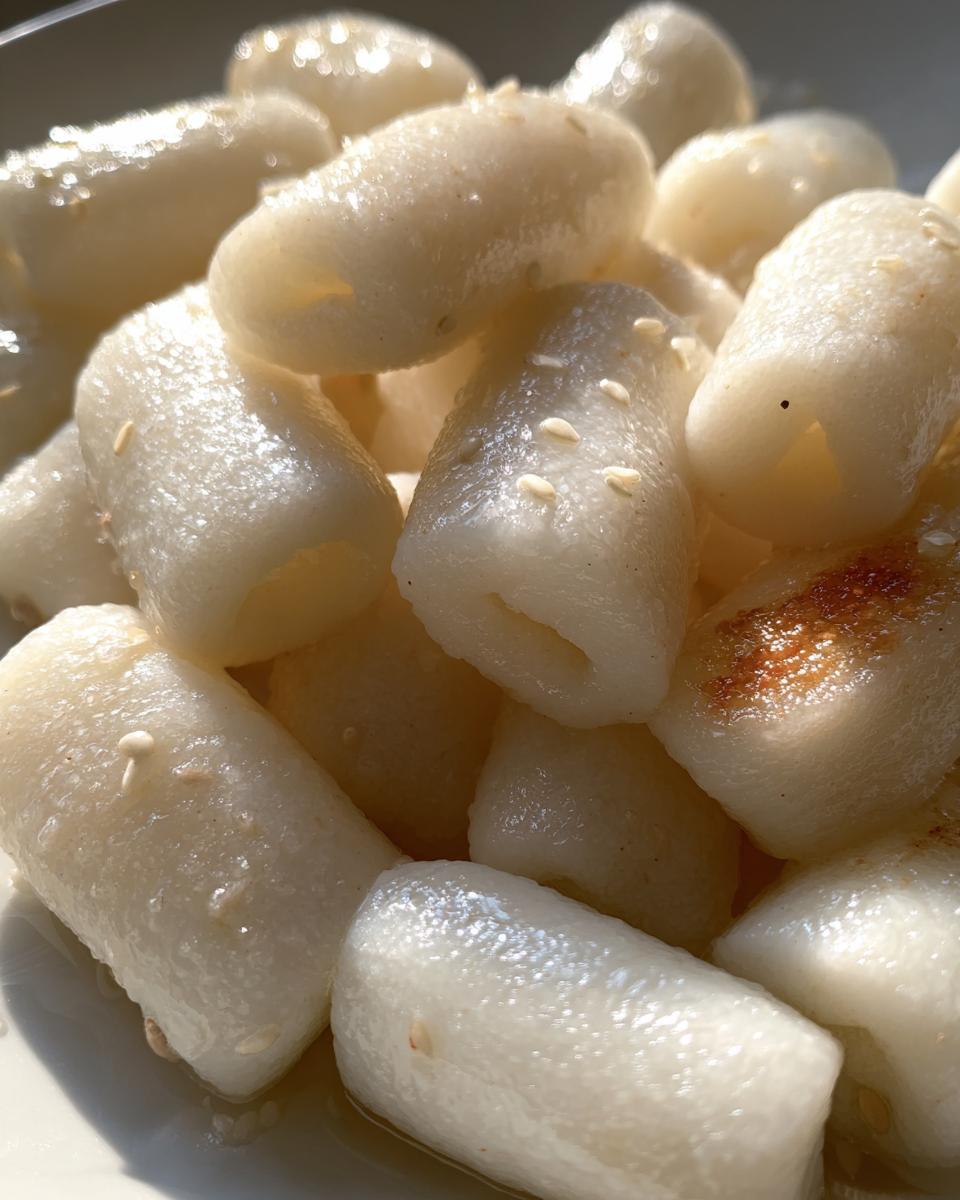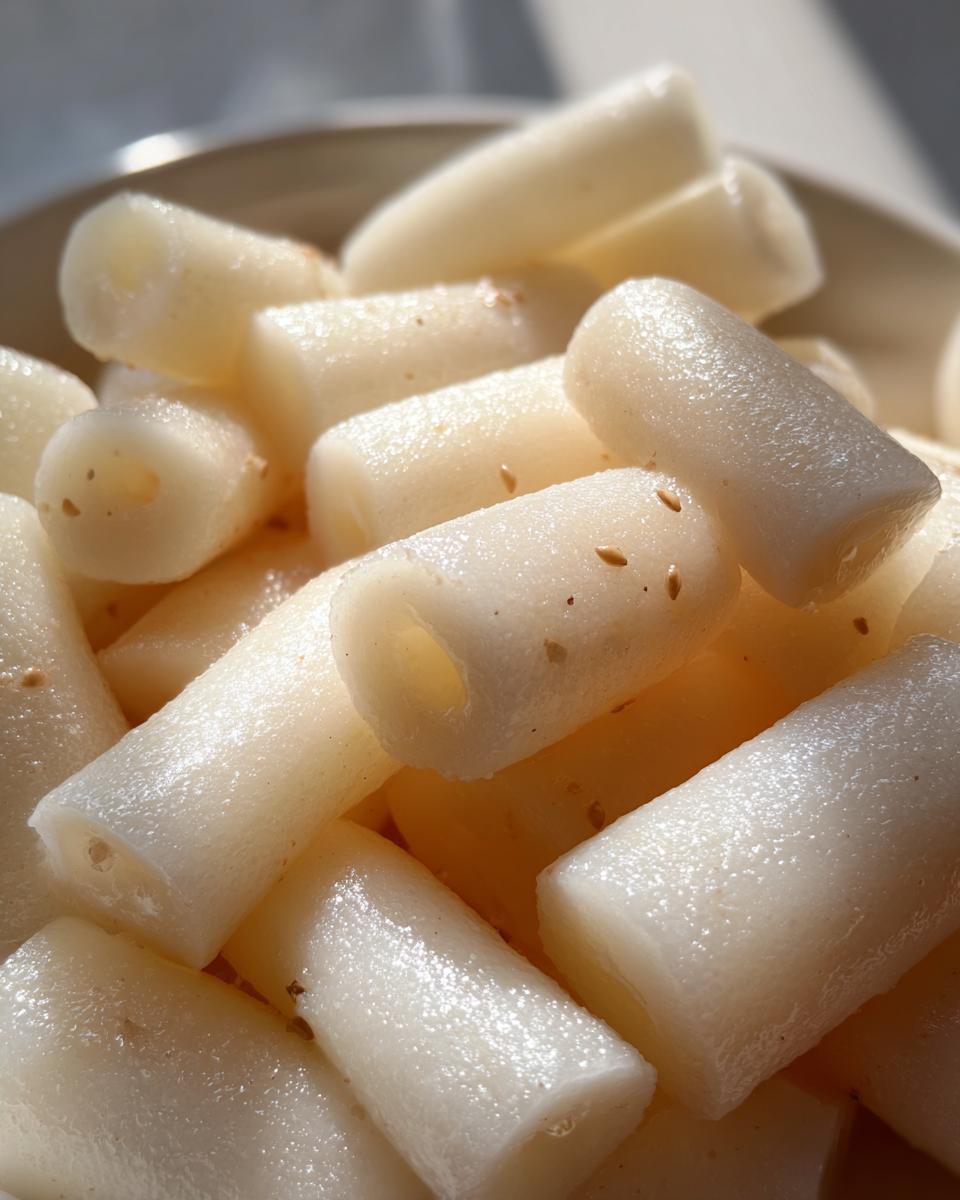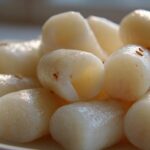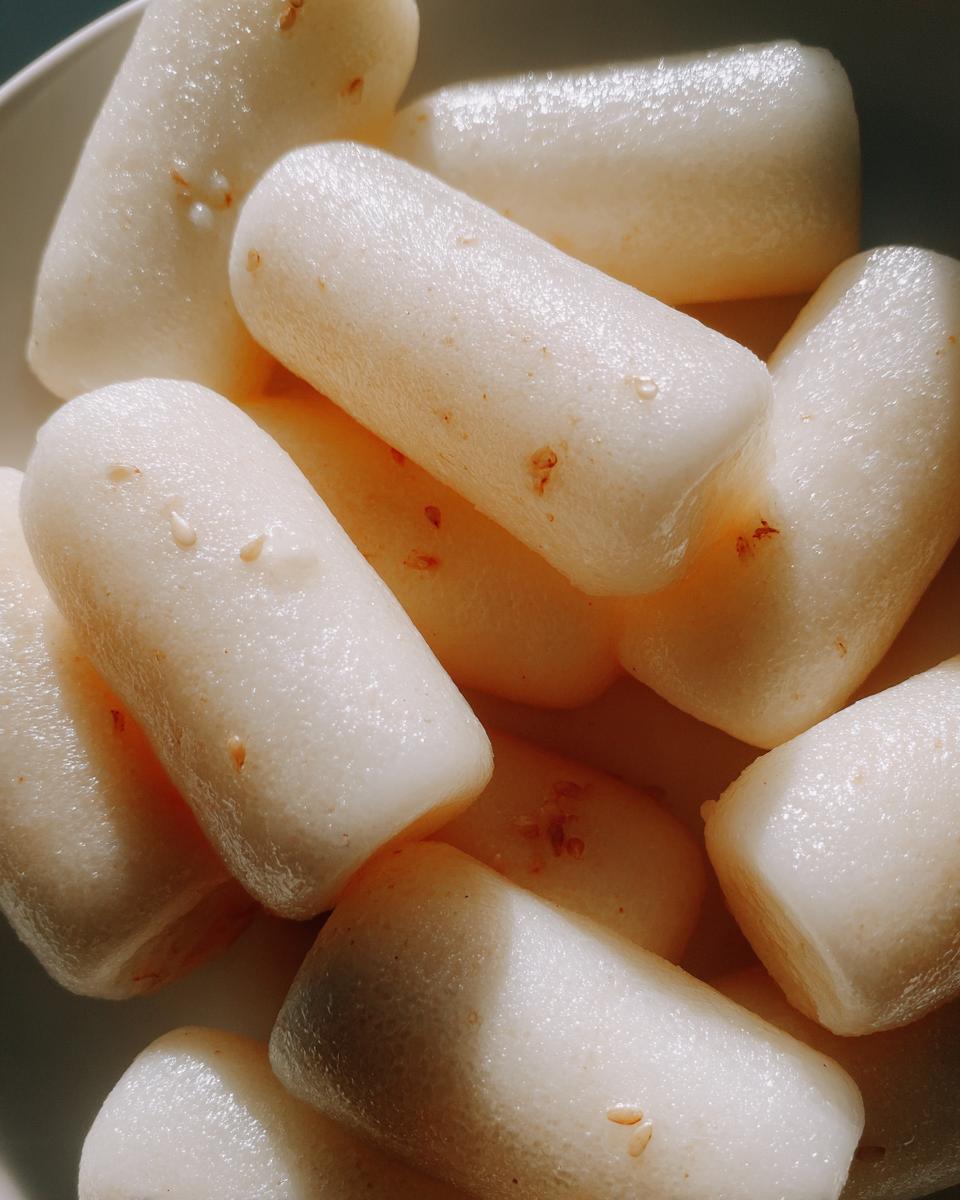Oh my goodness, you guys! If there’s one thing I’ve learned on my Korean cooking journey, it’s that making your own Korean rice cakes, or garaetteok, at home is an absolute game-changer. Seriously, it’s like night and day compared to anything you can buy at the store. I used to just grab a pack from the Asian market, thinking that was good enough. But then, a few years ago, I decided to try my hand at it, and wow, my whole world shifted!
The freshness, the chewiness, the way they just melt in your mouth – there’s nothing quite like homemade. It just transforms any dish, from a fiery tteokbokki to a comforting tteokguk. Trust me, once you make these simple, authentic garaetteok yourself, you’ll never look back. It’s surprisingly easy, incredibly satisfying, and gives you that true taste of Korea right in your own kitchen. Let’s get cooking!
Why You’ll Love Making Your Own Korean Rice Cakes Garaetteok
Okay, so you might be thinking, “Why bother making them when I can just buy them?” And I get it, convenience is king! But trust me on this one, making your own Korean rice cakes, your very own garaetteok, is a truly rewarding experience, and the payoff is HUGE. Here’s why I’m always nagging my friends to try it:
- Unmatched Freshness: Store-bought just can’t compare.
- Perfect Texture Control: You get to decide just how chewy and delightful they are.
- No Mystery Ingredients: You know exactly what’s going into your food.
- Cost-Effective: It’s surprisingly budget-friendly for such a staple.
- Ultimate Bragging Rights: “Oh, these? Yeah, I made the rice cakes from scratch!”
The Freshness of Homemade Korean Rice Cakes Garaetteok
This is probably the biggest reason, if I’m being honest. When you make garaetteok at home, they have this incredible, almost bouncy chewiness that you just don’t get from a package. They absorb sauces better, feel softer, and honestly, they just taste cleaner. It’s like the difference between a fresh-baked cookie and one from a box – no contest!

Essential Ingredients for Perfect Korean Rice Cakes Garaetteok
Alright, let’s talk about what you’ll need to whip up these amazing homemade Korean rice cakes. The beauty of garaetteok is how simple the ingredient list is. You probably have most of this stuff in your pantry already! But, like with any recipe that has few ingredients, the quality of each one really shines through. Trust me, it makes all the difference in that perfect chewy texture we’re aiming for.
- 2 cups non-glutinous rice flour: This is NOT the same as sweet rice flour (glutinous rice flour). Make sure you get the right one!
- 1/2 teaspoon salt: Just a little bit to balance the flavors.
- 3/4 cup hot water: This needs to be hot, almost boiling, but not quite.
- 1 tablespoon sesame oil: For tossing the finished rice cakes to prevent sticking and add a lovely aroma.
Understanding Your Ingredients for Korean Rice Cakes Garaetteok
So, why these specific ingredients? Well, the non-glutinous rice flour is absolutely crucial here. It gives you that firm, yet delightfully chewy texture that’s characteristic of garaetteok. If you use glutinous rice flour, you’ll end up with something much softer and stickier, more like mochi, which isn’t what we want for these. And that hot water? It’s key for “cooking” the flour slightly, helping it bind together into a smooth, pliable dough that’s easy to work with and gives you that perfect bounce.

Step-by-Step Guide: How to Make Korean Rice Cakes Garaetteok
Alright, you’ve got your ingredients, you’re excited, and now it’s time for the fun part: making the actual garaetteok! Don’t be intimidated; this process is super straightforward, and once you get the hang of it, you’ll be whipping up batches of these delicious Korean rice cakes like a pro. Just follow these steps, and you’ll have perfect, chewy rice cakes ready for your favorite dishes in no time.
Preparing Your Dough for Korean Rice Cakes Garaetteok
First things first, grab a big bowl and toss in your non-glutinous rice flour and salt. Give it a quick whisk to combine. Now, for the magic part: slowly, I mean *slowly*, pour in that hot water. Use a spoon or a sturdy spatula to mix it until it forms a shaggy, crumbly dough. Once it’s cool enough to handle, get in there with your hands! Knead that dough for a good 10-15 minutes. You’re looking for it to become smooth and elastic, almost like play-doh. It should be firm but pliable, not sticky at all.
Shaping and Cooking Your Korean Rice Cakes Garaetteok
Once your dough is perfect, divide it into smaller, manageable portions. Now, roll each portion into long, cylindrical ropes, about half an inch thick. Think of them like thick pencils. Then, slice them into 2-3 inch pieces – this is your classic garaetteok shape! Bring a big pot of water to a rolling boil. Carefully drop your rice cakes in, and here’s the trick: they’ll sink, but then they’ll float to the surface when they’re done, usually in about 3-5 minutes. Don’t overcook them! Immediately transfer them to an ice bath to cool down and prevent sticking. Once cool, drain them well and toss with a little sesame oil. They’re ready!
Tips for Success with Your Korean Rice Cakes Garaetteok
Okay, so you’ve made your first batch of homemade garaetteok – yay! Now, let’s talk about those little tweaks and pro tips that’ll make your Korean rice cakes absolutely perfect every single time. These are the things I’ve learned through trial and error (and a few sticky situations, let me tell you!). Getting the dough consistency just right is probably the biggest one. It should feel smooth and elastic, not too wet and not too crumbly. If it’s too dry, add a tiny splash more hot water; if it’s too sticky, a little more rice flour. And don’t forget that sesame oil at the end – it’s crucial for preventing those beautiful rice cakes from sticking together as they cool. Trust me, you don’t want a giant rice cake blob!
Common Pitfalls When Making Korean Rice Cakes Garaetteok
Don’t worry if your first attempt isn’t 100% perfect. We’ve all been there! One common issue is mushy rice cakes, which usually means you’ve overcooked them. Keep an eye on them; once they float, they’re pretty much done. Another one is a dough that’s too dry and cracks when you try to roll it. This means you need a little more hot water. Just adjust slowly until it feels right!
Storing and Reheating Your Korean Rice Cakes Garaetteok
So, you’ve got these glorious homemade Korean rice cakes, and if you’re like me, you’ve probably made more than you need for one meal. Good news! They store beautifully. Just make sure they’re completely cool, then toss them lightly with a tiny bit more sesame oil to prevent sticking. Pop them into an airtight container or a Ziploc bag and stash them in the fridge for up to 3 days. When you’re ready to use them again, you can just add them directly to your soup or stir-fry, or blanch them quickly in hot water for a minute or two to soften them right up. Easy peasy!
Frequently Asked Questions About Korean Rice Cakes Garaetteok
I get a lot of questions about making and using these delicious Korean rice cakes, so I thought I’d answer some of the most common ones here. If you’ve got more, just drop them in the comments below!
Can I Use Other Flours for Korean Rice Cakes Garaetteok?
This is a big one! For authentic garaetteok, you really need non-glutinous rice flour. Using glutinous rice flour (which is often labeled “sweet rice flour”) will give you a much softer, chewier, almost sticky texture, more like mochi or some types of ddeok. It won’t hold its shape as well in dishes like tteokbokki. So, stick to non-glutinous for that perfect Korean rice cake bounce!
How to Prevent Korean Rice Cakes Garaetteok from Sticking?
Ah, the sticky situation! The best way to prevent your freshly cooked garaetteok from turning into a giant blob is a two-pronged attack. First, after boiling, immediately transfer them to an ice bath. This shocks them and stops the cooking process, firming them up. Second, once they’re cooled and drained, toss them lightly with a little bit of sesame oil. This creates a thin barrier that keeps them from clinging to each other. It’s a lifesaver!
Estimated Nutritional Information for Korean Rice Cakes Garaetteok
Okay, for those of you who like to keep an eye on the numbers, here’s an estimated look at the nutritional breakdown for a serving of these homemade Korean rice cakes. Just remember, these values are estimates and can totally vary based on the exact brands of ingredients you use and how precise you are with your measurements. But it gives you a good idea!
- Calories: 250
- Fat: 4g
- Carbohydrates: 50g
- Protein: 5g
Your Turn: Share Your Korean Rice Cakes Garaetteok Experience
Alright, my friends, you’ve got the recipe, you’ve got the tips – now it’s YOUR turn! I’d absolutely love to hear how your homemade Korean rice cakes, your very own garaetteok, turn out. Did you try them in tteokbokki? Or maybe a comforting tteokguk? Leave a comment below, rate the recipe, or even better, share your cooking adventures on social media and tag me! I can’t wait to see your delicious creations!
Print
Perfect 2-Ingredient Korean Rice Cakes Garaetteok Disaster
- Total Time: 35 minutes
- Yield: 4 servings 1x
- Diet: Vegetarian
Description
Simple Korean rice cakes, garaetteok, perfect for various Korean dishes.
Ingredients
- 2 cups non-glutinous rice flour
- 1/2 teaspoon salt
- 3/4 cup hot water
- 1 tablespoon sesame oil
Instructions
- In a large bowl, combine rice flour and salt.
- Gradually add hot water, mixing until a dough forms.
- Knead the dough for 10-15 minutes until smooth and elastic.
- Divide the dough into small portions and roll each into long, cylindrical shapes, about 1/2 inch thick.
- Cut the cylinders into desired lengths, typically 2-3 inches.
- Bring a large pot of water to a boil.
- Add the rice cakes to the boiling water and cook until they float to the surface, about 3-5 minutes.
- Transfer the cooked rice cakes to an ice bath to cool and prevent sticking.
- Drain well and toss with sesame oil to prevent sticking.
- Use immediately or store in an airtight container in the refrigerator for up to 3 days.
Notes
- For best results, use fresh rice flour.
- The dough should be firm but pliable. Adjust water if needed.
- Do not overcook the rice cakes, or they will become mushy.
- These rice cakes are versatile and can be used in tteokbokki, tteokguk, or other stir-fries.
- Prep Time: 30 minutes
- Cook Time: 5 minutes
- Category: Side Dish
- Method: Boiling
- Cuisine: Korean
Nutrition
- Serving Size: 1/4 of recipe
- Calories: 250
- Sugar: 0g
- Sodium: 290mg
- Fat: 4g
- Saturated Fat: 0.5g
- Unsaturated Fat: 3.5g
- Trans Fat: 0g
- Carbohydrates: 50g
- Fiber: 1g
- Protein: 5g
- Cholesterol: 0mg
Keywords: Korean rice cakes, garaetteok, tteok, rice flour, homemade rice cakes

